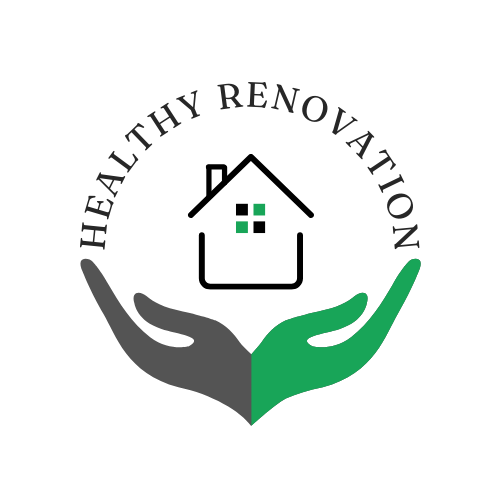Drinking Water from the Tap in Australia: Ensuring Health and Wellbeing
Water is the essence of life, and access to clean, safe drinking water is a fundamental necessity. In Australia, tap water is generally considered safe to drink, thanks to stringent national water quality guidelines. However, understanding the specifics of these guidelines, the potential contaminants in our water, and the various filtration options available can significantly improve our health and wellbeing.
National Water Quality Guidelines
Australia’s tap water quality is regulated by the Australian Drinking Water Guidelines (ADWG), developed by the National Health and Medical Research Council (NHMRC) and the Natural Resource Management Ministerial Council (NRMMC). These guidelines set limits for various contaminants to ensure water is safe for consumption. The ADWG covers microbiological, physical, and chemical parameters, including bacteria, viruses, heavy metals, pesticides, and organic compounds.
Common Contaminants in Australian Tap Water
While Australian tap water is among the safest globally, occasional contaminants can still pose risks. Here are some common contaminants found in Australian tap water:
- Microbiological Contaminants: Pathogens such as E. coli, Giardia, and Cryptosporidium can enter water supplies through various sources, including sewage overflows and agricultural runoff. These microorganisms can cause gastrointestinal illnesses.
- Heavy Metals: Lead, copper, and mercury can leach into water from old pipes and plumbing systems. Long-term exposure to these metals can lead to serious health issues, including neurological damage and kidney problems.
- Chlorine and Chloramine: These disinfectants are used to kill harmful microorganisms in water. While effective, they can leave residual byproducts that may have adverse health effects.
- Pesticides and Herbicides: Agricultural runoff can introduce chemicals like atrazine and glyphosate into water supplies. These substances have been linked to various health issues, including hormonal disruptions and cancer.
- Fluoride: While fluoride is added to water supplies to prevent tooth decay, excessive intake can lead to dental fluorosis and other health concerns.
Filtration Setups in the Kitchen
To ensure the water you drink is as pure as possible, various filtration systems can be installed in your kitchen. Here are the most common options:
- Activated Carbon Filters: These filters use carbon to absorb contaminants, particularly organic compounds, chlorine, and some pesticides. They are relatively inexpensive and easy to install.
- Reverse Osmosis (RO) Systems: RO systems use a semi-permeable membrane to remove a wide range of contaminants, including heavy metals, nitrates, and pathogens. They are highly effective but can be more expensive and may require professional installation.
- Ultraviolet (UV) Purifiers: UV purifiers use ultraviolet light to kill bacteria and viruses. While effective against microbiological contaminants, they do not remove chemical impurities.
- Ceramic Filters: These filters use porous ceramic material to filter out bacteria and sediments. They are often combined with other filtration methods for enhanced effectiveness.
Efficient Options to Minimise Exposure to Contaminants
Ensuring the purity of your drinking water involves selecting the right filtration system based on your needs and budget. Here are three levels of filtration techniques available in Australia:
- Basic Filtration (Activated Carbon Filters):
- Cost: $50 – $200
- Effectiveness: Removes chlorine, sediments, and some organic compounds. Limited effectiveness against heavy metals and pathogens.
- Maintenance: Replace filter cartridges every 2-3 months.
- Intermediate Filtration (Reverse Osmosis Systems):
- Cost: $300 – $1,000
- Effectiveness: Removes a wide range of contaminants, including heavy metals, nitrates, and pathogens. May also reduce fluoride levels.
- Maintenance: Replace pre-filters, post-filters, and the RO membrane every 6-12 months.
- Advanced Filtration (Combination of RO, UV, and Activated Carbon):
- Cost: $1,000 – $3,000
- Effectiveness: Comprehensive removal of contaminants, including chemicals, heavy metals, and microorganisms.
- Maintenance: Regular maintenance and replacement of multiple filter components.
Cost Comparison of Filtration Techniques
- Activated Carbon Filters:
- Initial Cost: $50 – $200
- Annual Maintenance Cost: $100 – $300
- Total Cost Over 5 Years: $550 – $1,700
- Reverse Osmosis Systems:
- Initial Cost: $300 – $1,000
- Annual Maintenance Cost: $100 – $300
- Total Cost Over 5 Years: $800 – $2,500
- Advanced Filtration Systems:
- Initial Cost: $1,000 – $3,000
- Annual Maintenance Cost: $200 – $500
- Total Cost Over 5 Years: $2,000 – $5,500
Benefits of Clean Water for Health and Wellbeing
Ensuring access to clean, filtered water can have profound benefits for your health and wellbeing:
- Reduced Risk of Illness: Filtration systems effectively remove pathogens, reducing the risk of gastrointestinal and other waterborne diseases.
- Improved Taste and Odor: Removing chlorine, sediments, and organic compounds improves the taste and smell of tap water, encouraging increased water consumption.
- Protection from Contaminants: Reducing exposure to heavy metals, pesticides, and other harmful substances can prevent long-term health issues, including neurological and developmental problems.
- Enhanced Hydration: Clean, pleasant-tasting water encourages better hydration, which is crucial for maintaining overall health, including proper kidney function, skin health, and energy levels.
- Environmental Benefits: Using home filtration systems reduces reliance on bottled water, decreasing plastic waste and environmental impact.
Conclusion
While Australian tap water is generally safe to drink, understanding potential contaminants and the available filtration options can significantly enhance your health and wellbeing. By investing in an appropriate filtration system, you can ensure that the water you and your family consume is as pure and healthy as possible. The benefits of clean water extend beyond just hydration—they contribute to long-term health, wellbeing, and environmental sustainability.
Incorporating a reliable water filtration system into your home is a proactive step towards safeguarding your health and enjoying the pure, refreshing taste of clean water every day.
